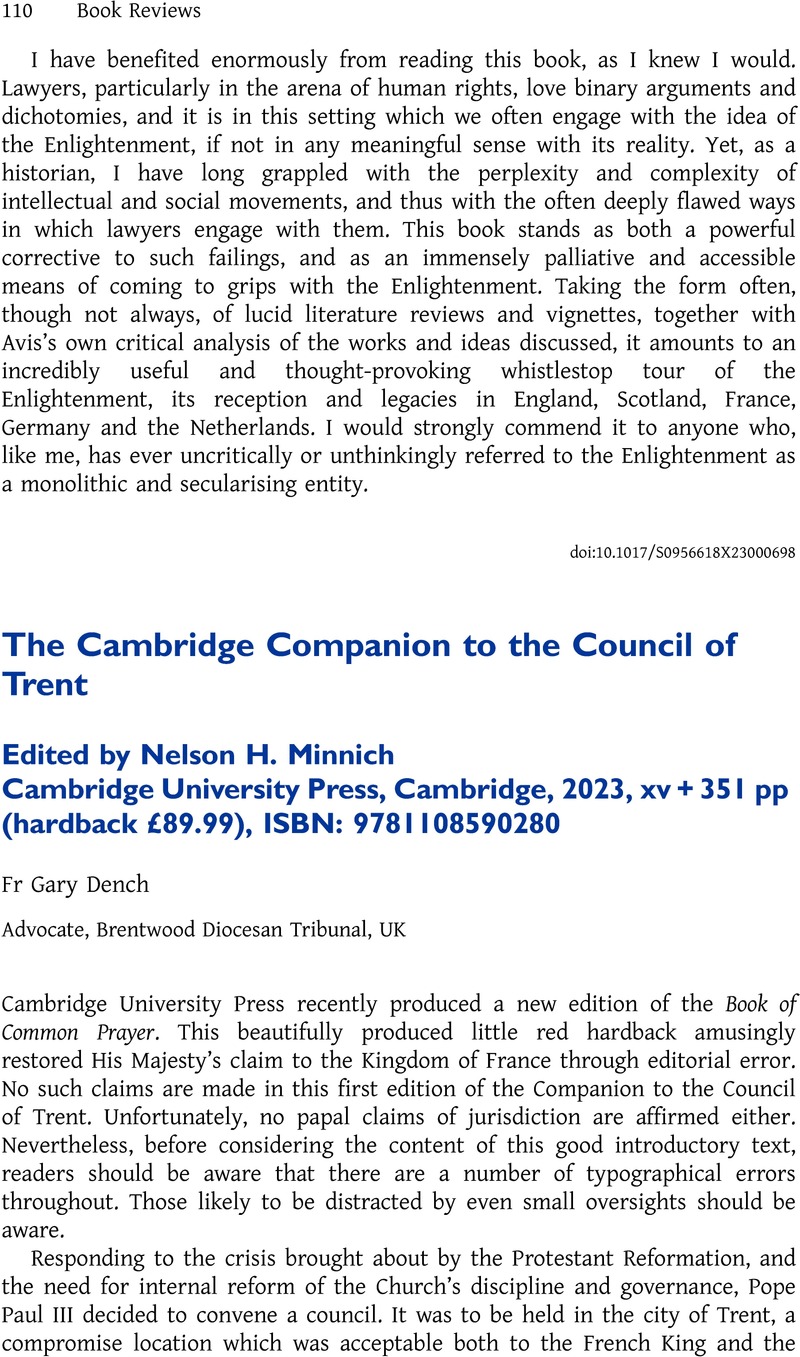No CrossRef data available.
Article contents
The Cambridge Companion to the Council of Trent Edited by Nelson H. Minnich Cambridge University Press, Cambridge, 2023, xv + 351 pp (hardback £89.99), ISBN: 9781108590280
Review products
The Cambridge Companion to the Council of Trent Edited by Nelson H. Minnich Cambridge University Press, Cambridge, 2023, xv + 351 pp (hardback £89.99), ISBN: 9781108590280
Published online by Cambridge University Press: 18 January 2024
Abstract
An abstract is not available for this content so a preview has been provided. Please use the Get access link above for information on how to access this content.

- Type
- Book Review
- Information
- Copyright
- Copyright © Ecclesiastical Law Society 2024



